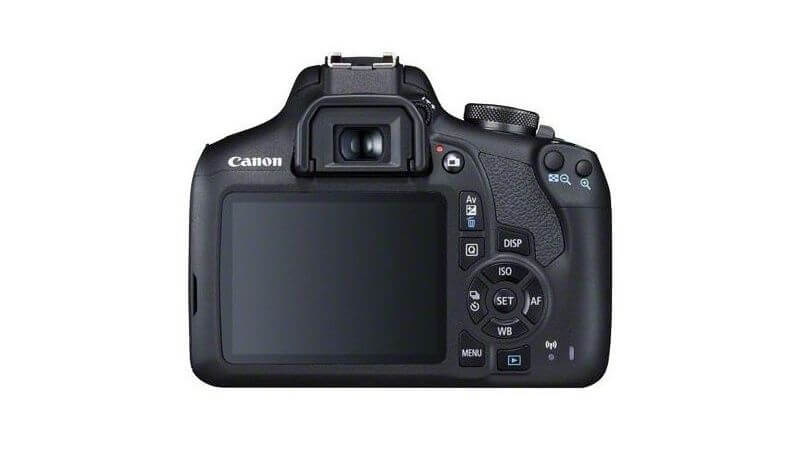Exposing to the right, why and how?
Last update: 04/19/2024
Our blog continues to grow thanks to you, our readers. This post may contain affiliate links, which means we can earn a small commission if you make a purchase through them, at no extra cost to you. This helps us to continue to bring you more and support our work!
Here we go into tips for more advanced photographers. The photographic technique that I present to you in this article, exposing to the right, requires to master and already know the basic terms, at least the exposure in photography. I can assure you right now, you don’t need to be a professional photographer to understand the general idea and apply it concretely. If you want to learn more about photography in detail, then this article is for you!
Car c’est finalement l’objectif aussi de ce blog photo, essayer de vulgariser au mieux la photographie et tout ce qui tourne autour, technique, conseils, matériel photo et autres. La technique elle-même vous permettra de tirer le meilleur de votre capteur et améliorera la qualité de vos photos de manière générale, plutôt cool, non ?
After having reminded you the notion of histogram in photography, I explain to you the real interest of exposing to the right, how we do in practice with our DSLR camera (or other), what the limits of this technique are or even how to post-process such a photo. At the end of the article, I will show you a concrete example of the utility of this technique and the beneficial effects it has on the quality of your photos. Keep in mind, however, that this technique requires you to shoot in RAW for more efficiency.
Reminder on the histogram
Before going into the presentation of this technique, I wanted to give a few brief reminders about this very important notion. I’ve written a full article on the histogram in photography if you are not yet familiar with this.
To put it simply, the histogram is the graphic representation of all the tones in your picture. You’ll basically already have a good idea, as soon as you shoot, if your photo is under-exposed, over-exposed, or lacks contrast for example.


So why is the term “exposing to the right” used? The idea is to simply refer to the histogram of your picture. The histogram is composed of several areas, from left to right:
- The black areas,
- The shadow areas,
- The mid-tone area,
- The highlighted area,
- The white area.
Simply put, the tighter your histogram is to the left, the more dark and black tones you’ll have in your picture. The opposite concerns this article, since the technique explained here will consist in exposing your histogram “as far to the right as possible” (but avoid overexposing, we’ll come back to this later). The interest will therefore be to bring as many highlights and white tones as possible into your image. I’ll now explain to you the why and how.
Why expose to the right, a bit of theory?
Without going into much detail, it is necessary to provide some explanation on the interest of exposing to the right in photography. First of all, you should know that there is a difference between the JPEG file (the basic one in your camera) and the RAW file which is the equivalent of a film in digital format, i.e. a raw image that must be processed in post-production.
Why am I telling you this? It’s important to know that when you shoot with your DSLR, the sensor saves different levels of brightness depending on whether you’re in JPEG/RAW. In JPEG, the sensor captures 256 levels of light (encoded in 8 bits) versus 4096 or 16,394 tones in RAW (depending on whether 12 or 14 bits). Sure, it’s a detail but all this to say that you’ll have much more information in a RAW than in a JPEG.

The important thing to remember is that luminosity levels are not distributed evenly on a histogram. In fact, about 50% is allocated to the highlighted area (the area to the right of the histogram). The remaining half is then allocated to the neighboring shades, etc. Once again, what does this mean concretely? You will simply get more data recorded in the highlights than in the midtones or even black tones. Simply put, you can capture a lot of information when your picture is bright and almost nothing in the shadows or black areas.
As proof, I did the test of taking two pictures. The first one where the exposure was made with my Av semi-automatic mode and the second where I increased the exposure compensation by +1. Both pictures show a correct exposure and no white areas were overexposed. However, the picture on the right shows much more information than the one on the left. The proof is that it is heavier by “2.3 Mb”. Even though the image may look very bright, on the sky, it shows much more information and detail in the dark areas of the image, especially on the slope in the foreground. PS: this is a picture to illustrate what I’m saying, not a masterpiece!


If you are new to photography or have read the article on ISO sensitivity, you should know that photos taken in low light and often at high ISO, are subject to the appearance of digital noise, which results in a very unattractive effect in photos. The general idea with this technique is therefore to limit the appearance of shadows or black areas as much as possible and to focus your photo on the right part of the histogram. Indeed, it will be much easier to retrieve information in the bright areas of the image (by underexposing them) than to look for information in the black areas (by overexposing them). In the latter case, the appearance of noise will be much greater. I also wrote a complete article on how to shoot indoors and low light photography, are you interested?
Keep in mind: “I recover a maximum of information for my post-processing on the computer”. The more you expose your photo to medium or dark tones, the more you lose information and destroy the quality of your image in reality. This technique is particularly interesting when you have contrasting scenes with large differences in brightness (for example in landscape photography). If you are already in difficult conditions, and depending on your equipment, this technique is not recommended. We come back to this below.
How to expose to the right in practice?
After having seen the detailed numbers and the interest of “shooting to the right” as we say, let’s now see how to put it in practice on your camera. I should point out, that no matter if you use a DSLR, mirrorless camera or compact camera, the histogram is always there (although I don’t know many people who shoot in RAW on a compact and edit their pictures!).
As mentioned before, the goal is to slide the histogram to the right. Beware, the histogram must not be entirely pushed to the right, or cut on the right. If it is the case, it simply means that your photo is largely overexposed and that you have therefore lost all the information in the white areas. Concretely, you only have white areas and you won’t be able to recover anything in post-processing in terms of details.
First of all, you should already be looking at your manual to know which button you need to press to display the histogram of your photo (it will often be the INFO or DISP button). You can then use this technique in either semi-automatic or manual mode. We’re getting to that.

If you are using semi-automatic modes (Av / TV for Canon cameras), the handling will be as follows:
- Place yourself with your digital camera in front of the subject, work on your framing and choose your settings,
- Take a first picture and observe your histogram. If the histogram is too centered (and therefore not far enough to the right), you’ll have to use what’s called exposure compensation. For Canon, you have to press the “Q” button to access the menu settings. Then you just have to use positive exposure compensation, i.e. shift the small cursor to the right of zero (to +1/3, +2/3 or +1),
- Shoot your photo again, and you’ll see that your picture will be clearer,
- Repeat this several times, shifting several notches to the right at worst. Depending on the conditions, it may be necessary to shift up to +1, maybe even +1.5.
For those who are comfortable with the exposure triangle (ISO, shutter speed, aperture), you can, instead of using exposure compensation, switch to Manual mode (M) and choose the settings that suit you best to get your histogram to the right. On the other hand, this requires having a very good control on the settings, but I know that in some situations, the Av mode is not enough for me and I prefer to switch to M mode.
On the screen, you will sometimes find the picture too bright, this obviously also depends on the brightness of your screen. So, don’t rely on it too much. You can also activate an overexposure indicator on some devices that will inform you if your picture is “burnt out” (too bright). But that’s not exact science either. I’ll tell you about it below.
The limits of this technique
This technique, highly appreciated by many photographers, however, has its limitations. Here are, in my opinion, the main ones:
- The first essential thing to know is that the histogram displayed on the screen of your camera, even if you shoot in RAW, is only a “vulgar approximation” of the tones of your JPEG associated with the RAW file. The camera can’t read RAW and it will be necessary to run it in a software to display the real RAW histogram. For those who are looking for a good software to search your RAW in detail -> rawdigger,
- As a result, special care should be taken with the overexposure indicator that you may see on some cameras. I would say that they always tend to overestimate overexposure. An area appearing as burnt (too white) when blinking on your histogram, will not necessarily be burnt when you import the RAW under Lightroom for example,
- For pictures with moving subjects (sports, action, wildlife, etc.), this technique will be applicable to a certain extent. My advice would be to position yourself where the shot will be taken, take a few test shots, adjust the settings (implied exposed to the right) and save it. If the brightness of the scene or the angle of your shot doesn’t change, then you can take a series of pictures without worrying about your histogram. If a parameter changes (sun going away, change in your position, etc.), you will have to reset its histogram to the right,

- I repeat it again here, but this technique of exposing to the right necessarily requires shooting in RAW, so as to be able to benefit from a maximum of information when shooting, but also to be able to get the most out of it, especially in the highlighted/white areas, where most of the data is located,
- Last point to talk about the limits of this technique, the risk of involuntary movement blur and even camera shakes. You’re gonna tell me, what’s that got to do with it? I see two specific cases.
If you are in conditions that are already very difficult in terms of luminosity (undergrowth, concert, etc.), you’re going to have a hard time pushing your histogram to the right. In fact, by voluntarily forcing the exposure to the right, you will force your camera to compensate on another parameter. By using +1 on exposure compensation for example, you will reduce the shutter speed and thus create a greater risk of camera shake. If you are already at the limit, for example when shooting handheld, the picture may be blurry. With a tripod, it will be fine. However, if your subject is moving, there is an increased risk of unintentional motion blur, the shooting shutter speed being too slow compared to the subject’s movements. The sharpness of your picture may be reduced.
Depending on the lens you are using, you may also find it difficult to use this technique. I’m thinking in particular of long focal length lenses that require a high shutter speed to avoid having a blurry picture. Again, the more you expose to the right, the more likely you are to get a blurry picture (or having to raise ISO to compensate and risk the appearance of noise).
Post-processing your photos
As already mentioned in the article, you will need to use a post-processing software to process your RAWs. One of the best known, and the one I use is Lightroom. I admit that if you are new to photography, the first steps of processing and learning how to use the software may seem a bit tricky at first, but you get used to it quickly!
If you have exposed your photo to the right, it may appear too bright to your eye. The advantage is that you have recovered detail in the shadow zones (by slightly overexposing) and that you have been careful not to burn your highlights.
The objective now is very often to:
- Reduce the exposure of highlights while keeping some detail (often the sky for example),
- Try to set the black areas correctly and light up the shadow areas of your image (they would have been even darker without this technique).
In any case, post-processing remains a very personal interpretation and choice. There is no perfect treatment!
A concrete example
I’ll end this article with a small picture test. I went through my archives to retrieve a picture from my trip to Asia that had not been perfectly exposed, slightly underexposed. The technique of exposing to the right had not been followed. I was in Av mode and the camera had chosen an exposure. I have now worked (after the fact) the levels of the picture to brighten it in a “correct” way. See below the edited picture and the zoom at 100%, even if it might not speak much on screen!


I then zoomed at 100% on the edited image under Lightroom to look at the shadow areas that had been lightened up (understand brightened) following the readjustment of the levels. As you can see quite well, a digital noise appears, some sort of artifacts, not very aesthetic, that are present simply because the shadow zones have been brightened. The technique of exposing to the right therefore makes it possible to expose the shadow and black areas in a “lighter” way, which avoids having to brighten them in post-processing. This clearly limits the appearance of noise. After all, it also depends on the noise management of your camera (which is why it is important)!
So, to conclude on the interest of exposing to the right in photography, I would say that it is a very interesting technique as it allows you to get the best out of your sensor by avoiding creating noise in the shadow/dark areas of your image, but mostly to recover a maximum of information in the highlights. Anyway, this is one of the tricks I use whenever I shoot and I really recommend you give it a try!
I hope that the explanations in this article were clear? Did you understand everything? Are you ready to try it out? If you like interesting techniques to improve your pictures, I invite you to understand the long exposure in photography.
See you soon, and good shooting,

Written by Sylvain PONS
I've been passionate about photography since 2010, learning as I went along. Today, I dedicate myself to guiding others in their choice of camera gear and sharing a variety of tips to improve their photography skills.
Despite our care, a mistake may have slipped into this article. If you find any, please don't hesitate to let us know so we can correct it as soon as possible and keep our information up-to-date!










